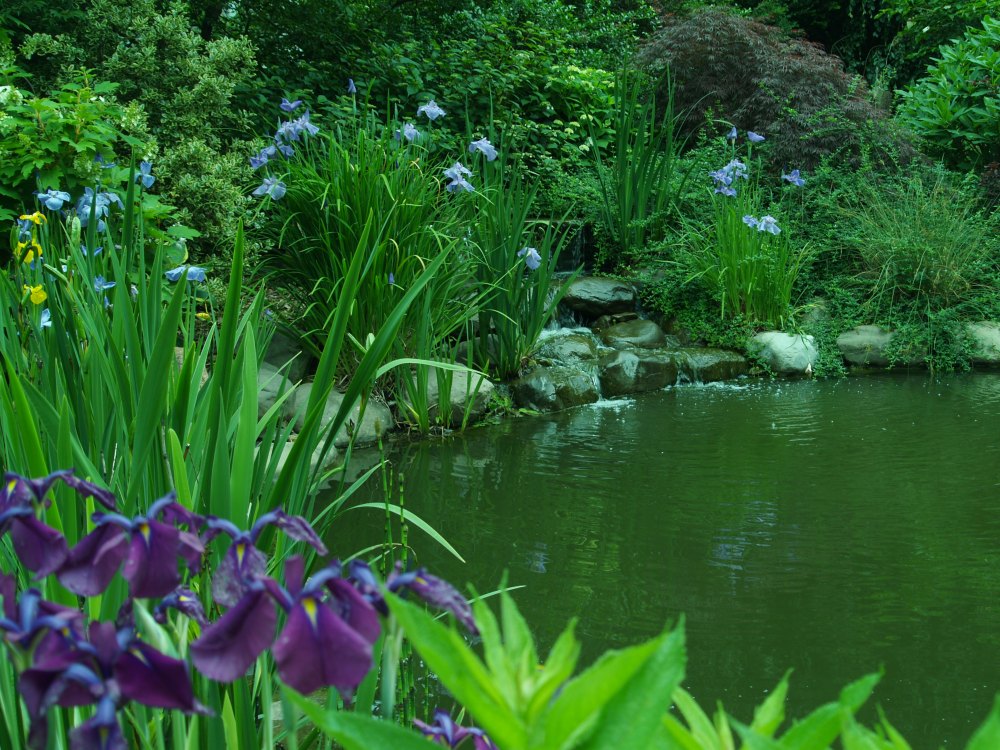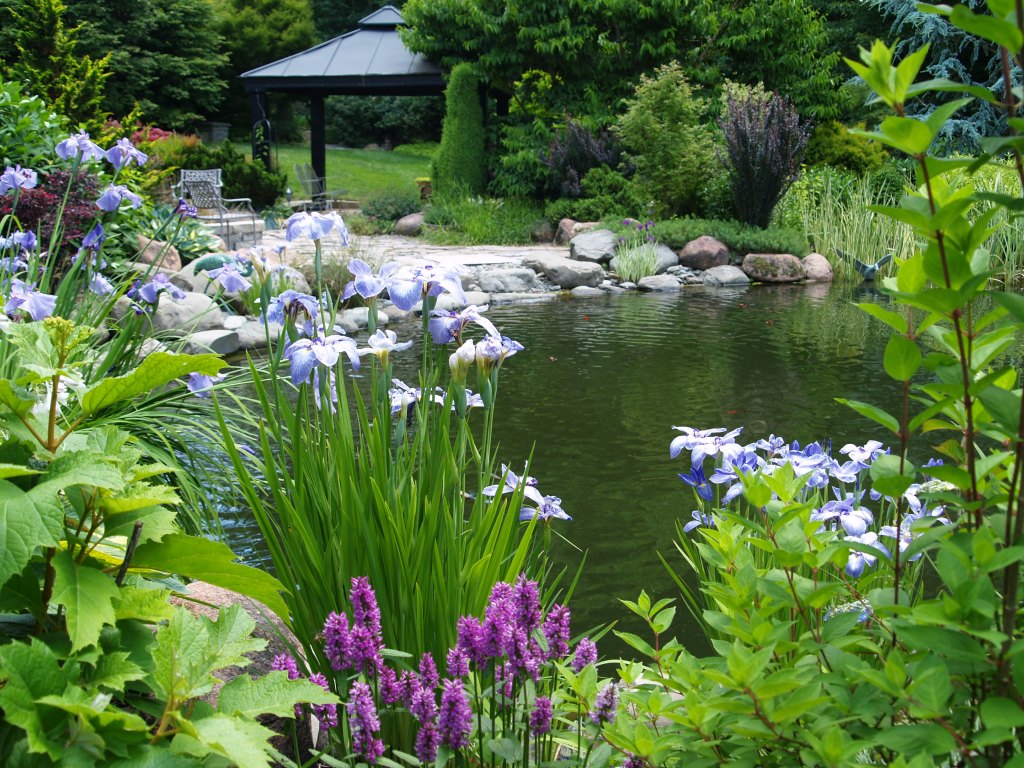The primary caution while tidying up the edges of the koi pond is, don’t tumble into the chilly water. Northern water snakes must be avoided in summer when they might suddenly appear from beneath the cover of Japanese irises, but they are not a threat in the cold of mid March. The water of the koi pond is deep, several feet at the edges and over four feet in the center, and with regular early spring freezes falling in must be avoided. After any March freeze the pond is covered by a thin layer of ice, so I hesitate even to dip my hand in to yank out roots of the nuisance yellow flag irises that have spread too far, overtaking too many of the much more beautiful Japanese irises.

Admittedly, I am not so nimble anymore, despite staged photos my wife posts to friends appearing to show me scaling rocky cliffs in the mountains. Where I once leaped between boulders, now I crawl along the pond’s edge. My judgment has improved only slightly with age, but my caution at the pond’s edge verifies some progress has been made.

The four smaller ponds are a breeze to tidy up, though this is the one mucky chore that is accomplished with outside assistance. Here, little grows in the ponds, with perennials and shrubs easily accessed on the dry edges. The work crew pumps out the water, then cleans the piles of soggy leaves that accumulate through autumn and winter. I read that ponds should not be located beneath trees, and located at the forest’s edge must be worse. But, for most of the year the ponds seem ideal, so I’d dig them in the same spots if I had it to do over. I’ve mucked out the ponds on my own, and would happily do it again, but this is my single luxury in bringing in outside labor when there is so much else to be done in the garden.

This is the prettiest, most natural pond I have seen on all the landscaping blogs that I read. I love the various colors of the Irises. If I had a couple acres, I would try to have a pond, too! Do you have a lot of sounds of frogs in the summer? I can just imagine the sounds from the bullfrogs, with such a lovely habitat.
In recent weeks the spring peepers start their chorus in the evening in the front and rear garden ponds. At any other time of the year (except winter) frogs leap into the ponds for safety any time I approach. We occasionally have a bullfrog in the front pond that is particularly loud.
Do you have koi in the pond? Are you a member of the ZNA Potomac Koi Club?
There are koi in the pond, though the number cannot be determined since they stir up the silt on the pond’s bottom. My neighbor has a small pond that was recently cleaned out of fish by what he says is a fresh water otter. I’ve never seen such a creature at our ponds, but I’m a bit concerned whatever creature it is would have cleaned ours out before the neighbor’s. I’ll start feeding soon, so I’ll know then.
I am not a member of the koi club. I’ve never been good at keeping up with clubs.
Lol, it took 3 years to finally get all of the yellow flag iris out of a 10 x 10 pond. Don’t envy you removing them from your beautiful large pond.
Unfortunately, the removal of yellow flags is complicated when they intertwine with the Japanese irises. All are planted in gravel between boulders, so getting at the roots is a bit of a chore. Of course, I now know that planting yellow flags in the bog area of the pond was a mistake, so perhaps someone else will be spared the headache. They are beautiful in flower, so it’s not a complete lost cause.
Yes, very beautiful! And an unusual color for most iris. I do miss their flowers. Might be silly enough to try them again in the small basin on the other side of the yard.
It would be the only thing in that basin besides a few rosy reds for mosquitoe control.
With Japanese iris declining in the koi pond I’ve begun planting others in a damp spot in the rear garden. I hope to increase the collection of these sturdy irises.